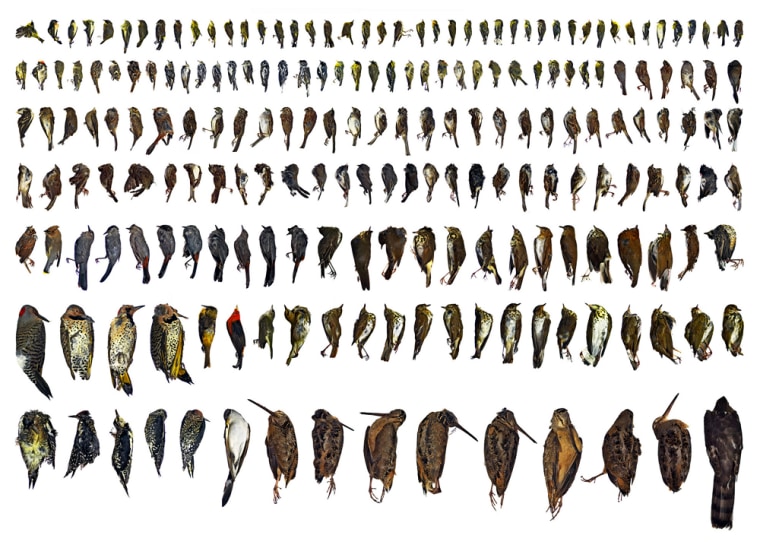It’s not one of the oldest environmental problems, but it may be among the most common: Who hasn’t been startled by a sudden thud and turned to see a small bird — dead or stunned — on the other side of a plate glass window?
“Every year, vast numbers of birds are killed or injured by colliding with windows,” says E.J. McAdams, executive director of New York City Audubon Society.
The group is mounting a multi-pronged campaign, Project Safe Flight, to seek solutions to the problem. Proposals include darkening skyscrapers at night and encouraging the use of new types of patterned glass.
“The problem is especially severe during migration season, when most birds fly at night, navigating by the moon and stars, at between 500 and 2,000 feet,” he said. “Especially when there’s cloud cover or inclement weather, they may be confused by city lights, and don’t know a window is really a solid barrier.”
In daytime, he added, birds may be fooled by a window’s reflection of sky or trees, or by decorative plants inside a building lobby.
Project Safe Flight also involves an annual survey, now in its seventh year, of avian casualties among the skyscrapers and shop facades of New York City. As of 2003, it had recorded losses of nearly 3,000 birds of 97 different species, about half the number recorded yearly in Central Park, McAdams said.
Fatalities by species
White-throated sparrows, among Gotham’s most common birds, lead the 2003 list with 423 killed and 181 injured, followed by the common yellowthroat, 208 killed and 147 injured; ovenbird, 163 killed and 77 injured, and dark-eyed junco, 104 dead and 50 hurt.
Despite New York’s proximity to water, no seabirds are on the list, and only one predator, a sharp-shinned hawk, was recorded in the six-year survey from April 1997 to May 2003. The rock pigeon — by far the most common city bird — suffered only three dead and two hurt.
Project Safe Flight initially focused on the glass-walled World Trade Center’s twin towers that rose 1,100 feet, into the flight path of migrating birds, and stayed partially lit overnight for cleaning crews. The towers were destroyed on Sept. 11, 2001.
For a time, the Empire State Building had turned out lights during bird migrations, but ended that practice after the attacks. “Having the lights on became a morale factor for the city, and we didn’t want to disagree with that,” McAdams said.
Lights off saves lives
Chicago and Toronto are other cities studying the bird collision phenomenon. Switching off decorative lighting in Chicago’s Loop during migration seasons is estimated to have saved 10,000 birds a year.
Jon McMillan, an architect for a new apartment tower complex in Queens, across the East River from the United Nations, said he became concerned about birds after seeing casualty tolls published by Audubon.
“For the most part,” he said, “we will avoid large expanses of glass near the ground and lighting our buildings too late in the night.”
Bruce Fowle, of the architectural firm Fox & Fowle, said the problem is so recently recognized that bird collisions were not a consideration when his company’s state-of-the-art Conde Nast building in Times Square was built in the late 1990s.
But it is now a “major issue,” attracting serious interest among building designers and contractors, said Fowle, whose wife is a former executive director of the city’s Audubon society. “Recent studies have caught our attention, and we’re trying to help,” he said.
Stand-alone skyscrapers pose more of a threat to birds than dense clusters of buildings like Times Square, Fowle said, and patterned glass to deter birds may be more realistic than turning off lights.
“You’re not going to get people to go home at 5 p.m. just because the birds are coming,” he said.
